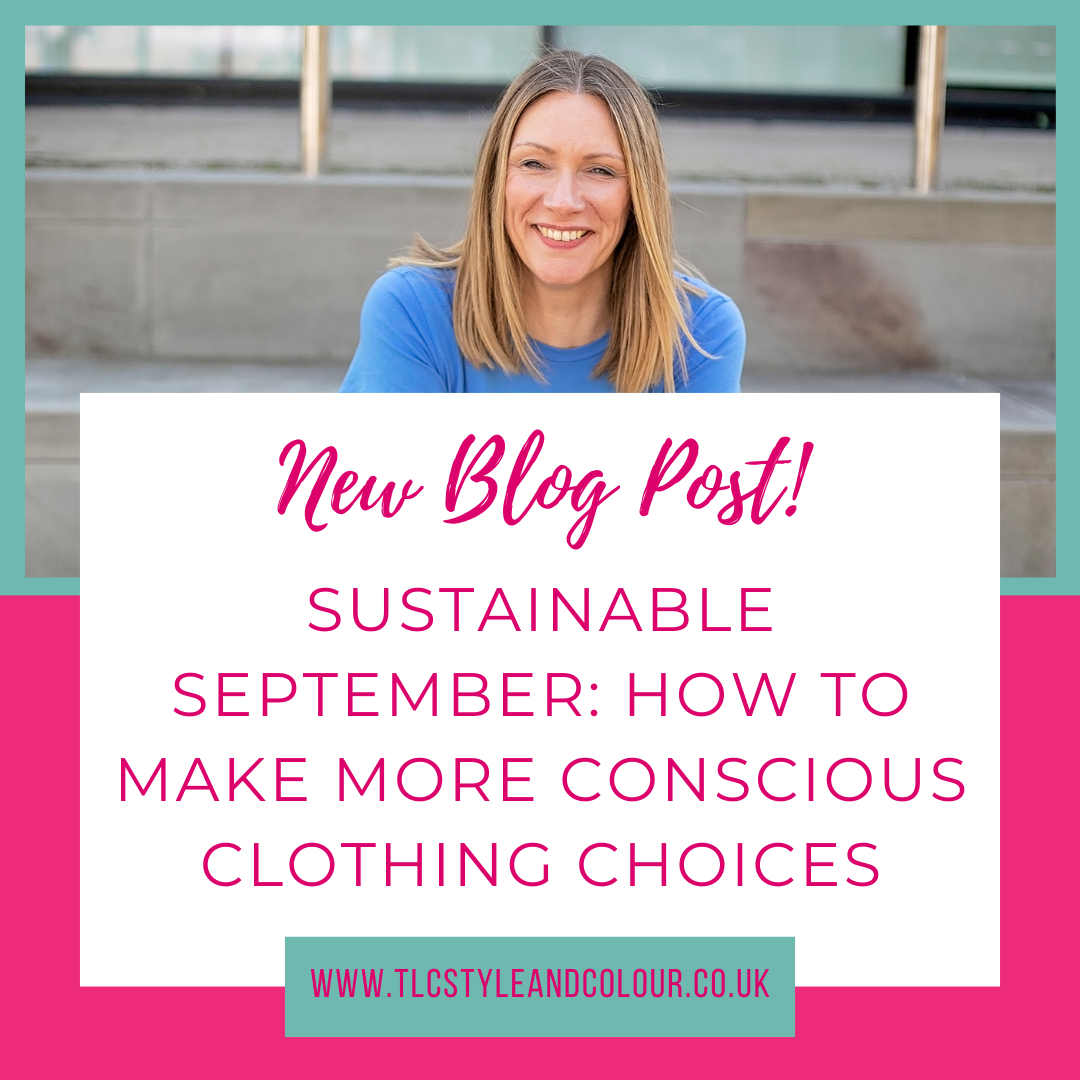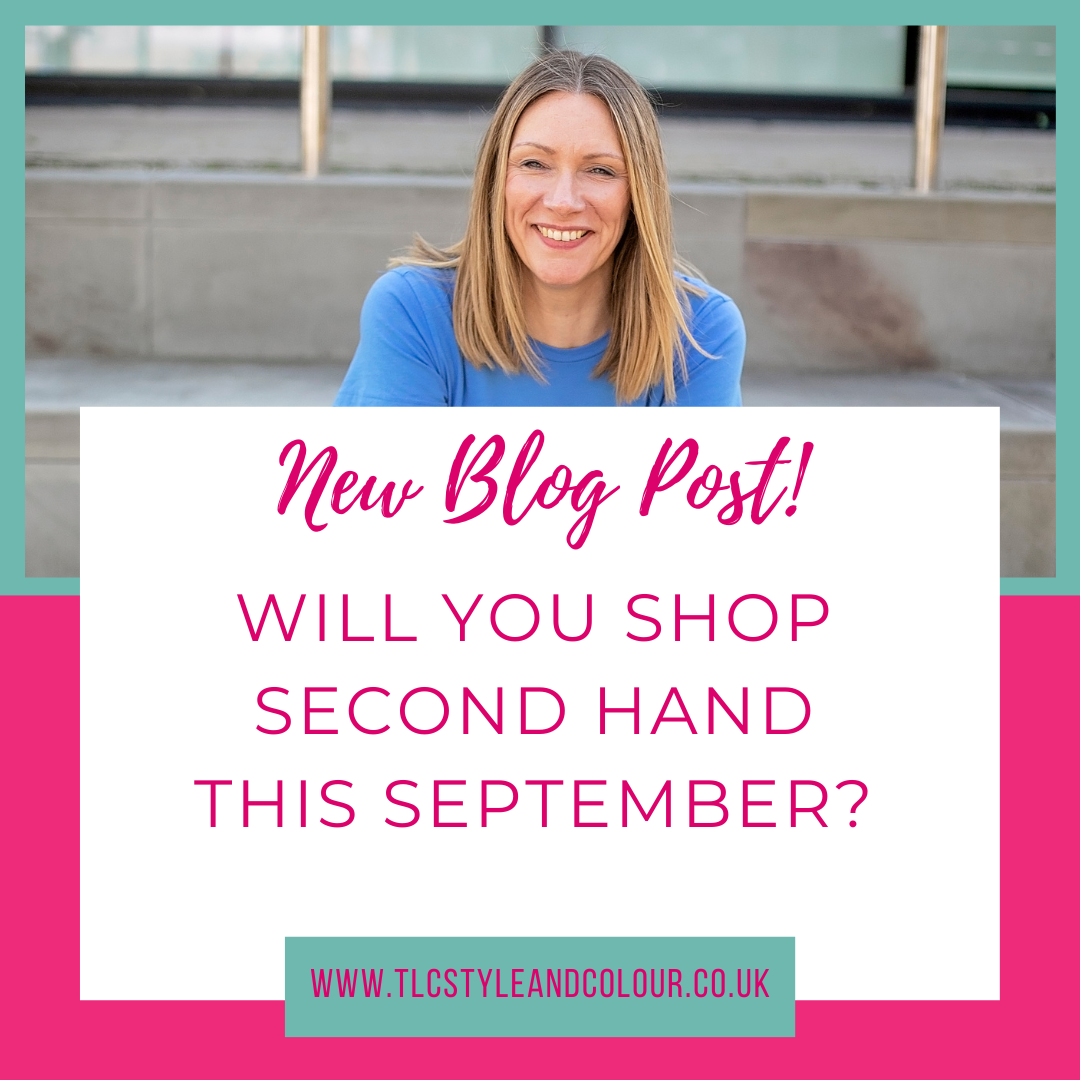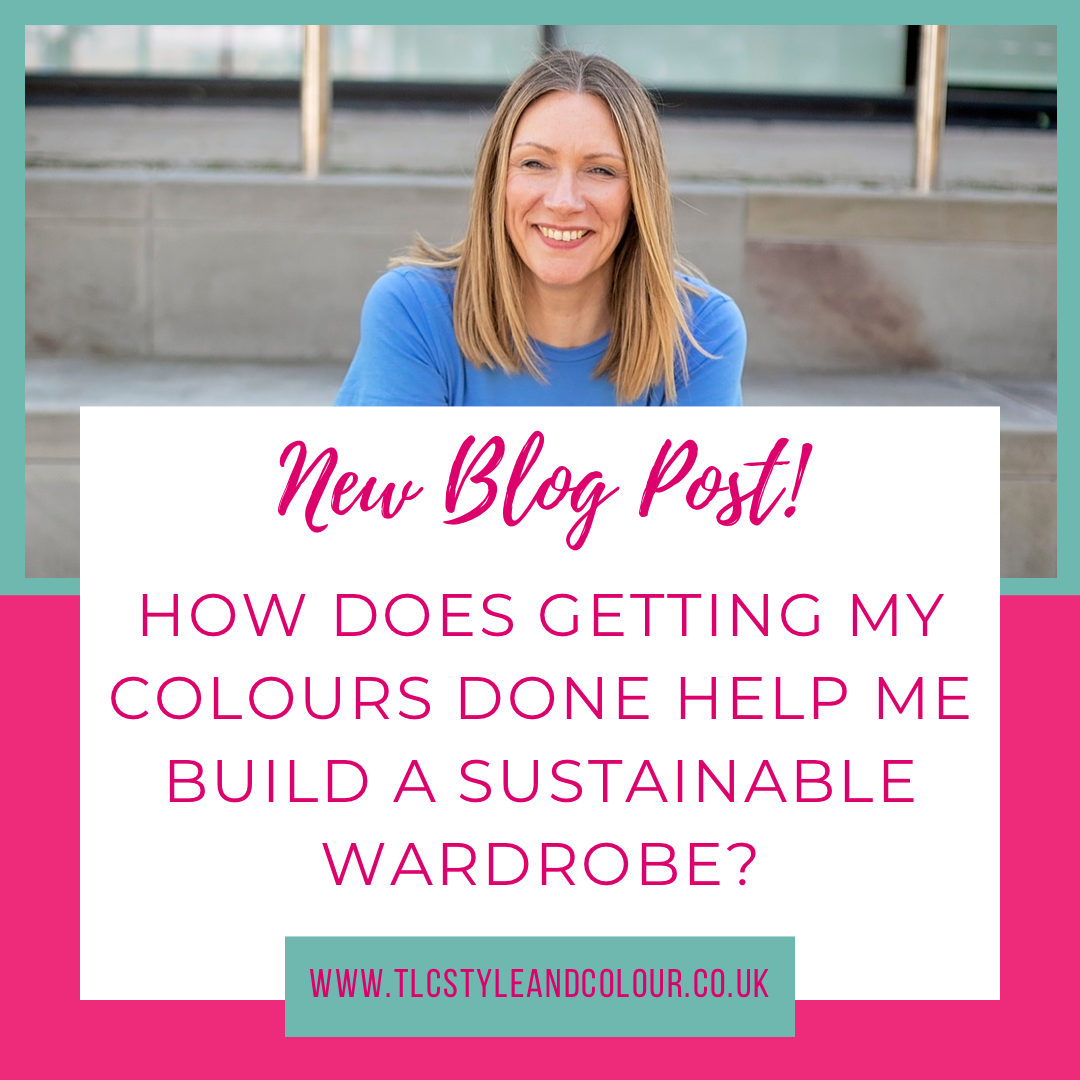As September is the month of sustainability, this theme will run throughout the month helping to guide you on being more conscious with your clothing choices.
The subject of sustainability can feel like a lecture when often, you may not realise that alternative options are available.
Everyone has the capacity to make a change. Even a small one can have a positive effect. Because I understand what suits me (colour, style, shape, fabric to fit and flatter) and how to make things work, I can make informed decisions and be intentional with the choices I make.
What does sustainable even mean?
According to Google in the Oxford Dictionary; the word ‘sustainable’ is an adjective involving the use of natural products and energy in a way that does not harm the environment.
Greenpeace state sustainability is a way of using resources that could continue forever. A sustain-able activity is able to be sustained without running out of resources or causing harm.
Clothing (over) production
Textile production contributes more to climate change than international aviation and shipping combined. Too much clothing is made and this overproduction has become the norm. Given how many people agree that they’ve got too many clothes, it seems unnecessary.
As a consumer, having more choice sounds good, doesn’t it? But, there’s now a constant stream of new collections and trends, leading to more clothes. Of course, this results in much lower costs for that t-shirt or dress, with price becoming the only differentiator. Yet, this overproduction must come at a cost.
Fast Fashion produces more carbon emissions per minute than driving a car around the world six times. This mass-production uses cheap fabric, not made to last, in poor working conditions and low wages for them to make a profit.
Research states that the average person now buys 60% more clothing than they did 15 years ago. Yet, around 300,000 tonnes of textile waste ends up in household bins every year. Less than 1% of textiles and clothes are genuinely recycled into new textiles and clothes.
Yet, there are 100 billion pieces of new clothing produced every year. Having done the numbers; this means each person alive in the world buying one garment every month, every year. (There was 7.888 billion people in the world in 2021 according to google).
Fabric choices
Most people don’t consider what their clothes are made from. The only way to know, is to check the label.
Polyester, acrylic, nylon, polyurethane and viscose are likely to be hanging in your wardrobe because they account for almost 70% of all material used in clothing production today. What’s more; they’re cheap. But, as synthetic plastic materials, their production often uses highly toxic chemicals (including oil), and not all manufacturers ensure the waste chemicals and bi-products are safely captured and reprocessed. This puts workers health at risk and pollutes air and water systems adding further environmental damage.
Because polyester is basically plastic, it takes years to break down. When you washing these plastic-based synthetic garments, the equivalent of 50 billion plastic bottles each year end up in the ocean. There’s often blended fabric too which makes them hard to separate and recycle.
Natural fibres like cotton, linen and wool don’t have the same environmental impact that synthetic fibres do. Whilst cotton grows naturally, it uses large amounts of pesticides and water which also have environmental impacts. But, there are modern, sustainable, organic and regenerative farming practices which limit the harm to the planet. This comes at a price.
What can you do?
This is all very sobering. But, you can make a conscious and informed decision about who and where you buy your clothes, and how many.
Check the label of your garments to find out where they are made, and what they are made from. If you’re not happy with the quality, ethics, or how it’s made, don’t buy it! As a consumer, it’s your choice and you should ask questions to the retailer if you feel they aren’t being transparent.
Be more mindful about the choices you make and consider each new purchase. Does it fill a gap you have in your wardrobe? Check if you have something similar hanging in your wardrobe before buying something new. If you’re not wearing something, do you know why?
Having understood the environmental impact, you may decide to only buy natural fibres. But, if you’re in need of some outdoor clothes, you’ll find them made of polyester to create warmth and durability.
That’s why I say be intentional with your purchases.
Beware of bargains! Clothes are cheaper than ever due to this overproduction. There’s a never-ending sale notification hitting your inbox daily, making them cheaper, fueling more guilty feelings if you’ve got a wardrobe full of clothes. Use my £s per wear motto and consider how many times you’re going to wear it. Getting something cheap for under a tenner may seem a bargain, but if you only wear it once, (or not at all) then it’s £10 per wear. Spend £50 on something which you wear 10 times, then it’s just £5 per wear.
The pre-loved and rental market is bigger than ever. In 2020, eBay reported the equivalent weight of 900 double decker buses had been saved from landfill. Buying, wearing and donating second hand clothes reduces the demand for new clothing production, and the impact to the planet. If you’re looking for better quality pieces or designers, but can’t afford the price tag, this could be a great solution for you.
Be more mindful
Slow fashion, fast fashion, sustainable or conscious are all decisions you make which have an impact.
If you buy well, you buy once! Good quality material and well-made clothes last longer than any fast fashion or cheap garment made poorly in low quality material. Even with a lower budget, you can still buy well. Spend as much as you can on key pieces to make your wardrobe functional and which you’ll wear for longer. Clothes in the right colour and style for you which fit and flatter your shape will always be the best choices because you’ll wear them more and get your money’s worth!
In my experience, if you know something doesn’t suit you, you won’t wear it!
Your options are to 1) cut your losses and add it to the charity shop bag. 2) sell it for a fraction of what you paid. 3) change it so that it does work for you. for example, switch up the buttons, change the length, add embellishments, or dye it. By extending the life of your clothes and wearing them for longer is thought to reduce the environmental impact by 20%.
Take care of your clothes, wash them less at a lower temperature, and they’ll last much longer.
September events and activities
There’s no time like the present to become more sustainable or conscious, with your clothing choices.
Oxfam’s Second Hand September will encourage you to take a stance against fast fashion by shopping pre-loved for 30 days: https://www.oxfam.org.uk/get-involved/second-hand-september/
Support your preferred charity or community and donate those unworn items this month! Next week, I’m attending an event alongside Tracy Fletcher, chair of the charity Smart Works Leeds. We’re both guest speakers at this event.
Save your clothing by repairing and re-wearing. Sustainable fashion week takes place between 20th and 29th of September. Their theme this year is the power of repair and they have a whole programme of activities around the country between 12 September and 12 October. Find full details here.
In the Yorkshire region, there are two hubs – one in Leeds (SCRAP – Sunny Bank Mills, Leeds LS28 5UJ) and the other in Huddersfield (Thread Republic – The Piazza Centre, Huddersfield HD1 2RS). Events take place between 21st and 28th September. I’ll be strutting down the runway at Thread Republic on Tuesday 24th September showcasing my upcycled garment made from a donated Ikea duvet cover (as you do). Tickets are available here. The full list of the events in Huddersfield for Thread Republic can be found here and in Leeds for SCRAP, visit this.
I hope this encourages you to make a small change and join one of the many events taking place this month. Look out for next week’s blog for tips on re-wearing and styling your clothes.
In the meantime, here’s a note of the sources and references used to produce this blog:
Sources:
Oxford dictionary: https://www.oxfordlearnersdictionaries.com/definition/english/sustainable#:~:text=sustainable-,adjective,does%20not%20harm%20the%20environment
Greenpeace: https://www.greenpeace.org.uk/news/fast-fashion-climate-change-pollution-violence/
2019 Government Fashion report: https://publications.parliament.uk/pa/cm201719/cmselect/cmenvaud/1952/report-summary.html
Community Clothing: https://communityclothing.co.uk/pages/the-materials-we-use
Sustainable Fashion week: https://www.sustainablefashionweek.uk/sfw-2024
Oxfam: https://www.oxfam.org.uk/get-involved/second-hand-september/, https://www.oxfam.org.uk/oxfam-in-action/oxfam-blog/7-facts-about-sustainable-fashion/, https://www.oxfam.org.uk/oxfam-in-action/oxfam-blog/what-is-slow-fashion/
Fashion United: https://fashionunited.uk/news/background/how-not-sustainable-is-the-fashion-industry/2023121173061#







